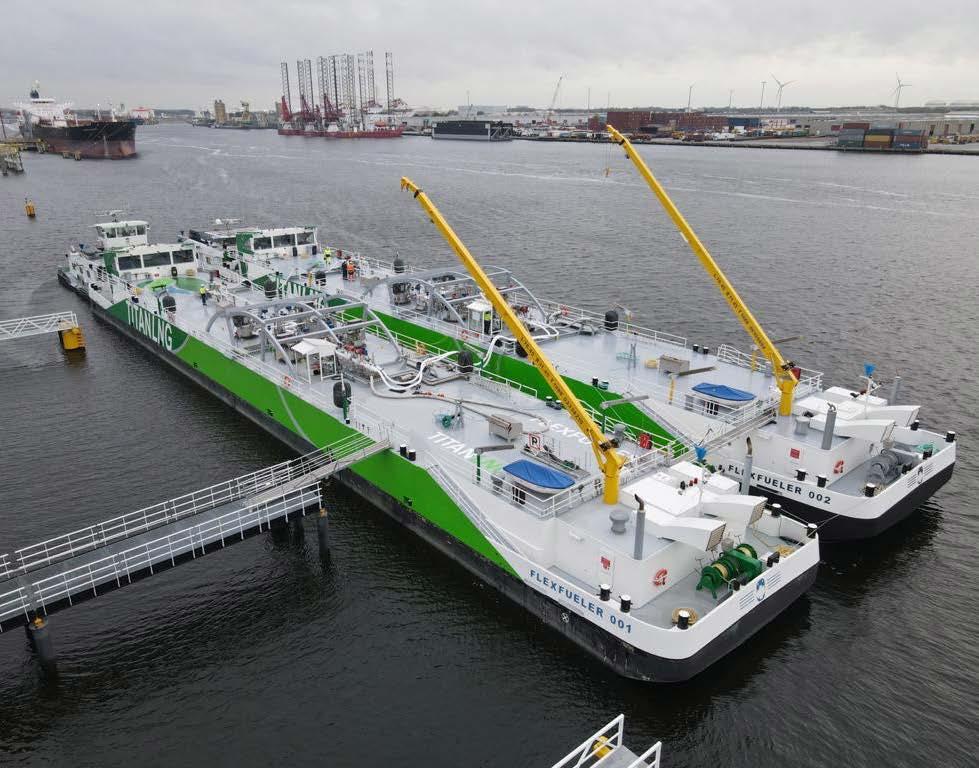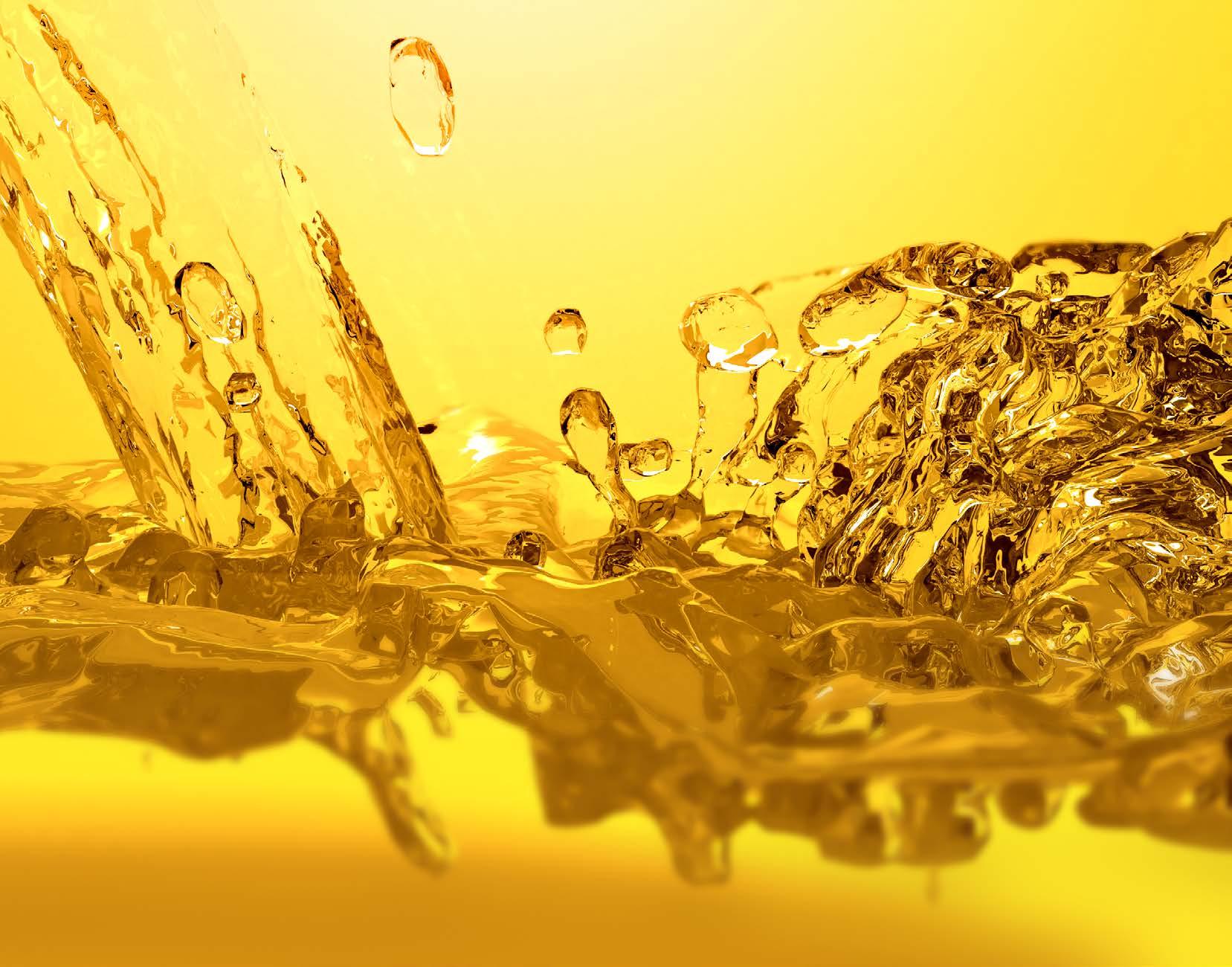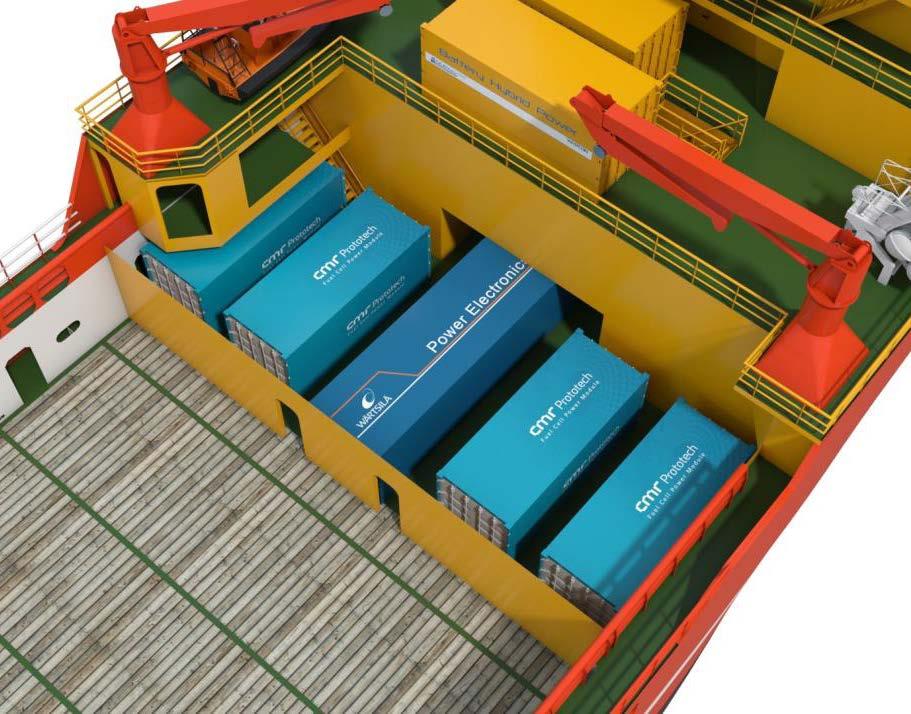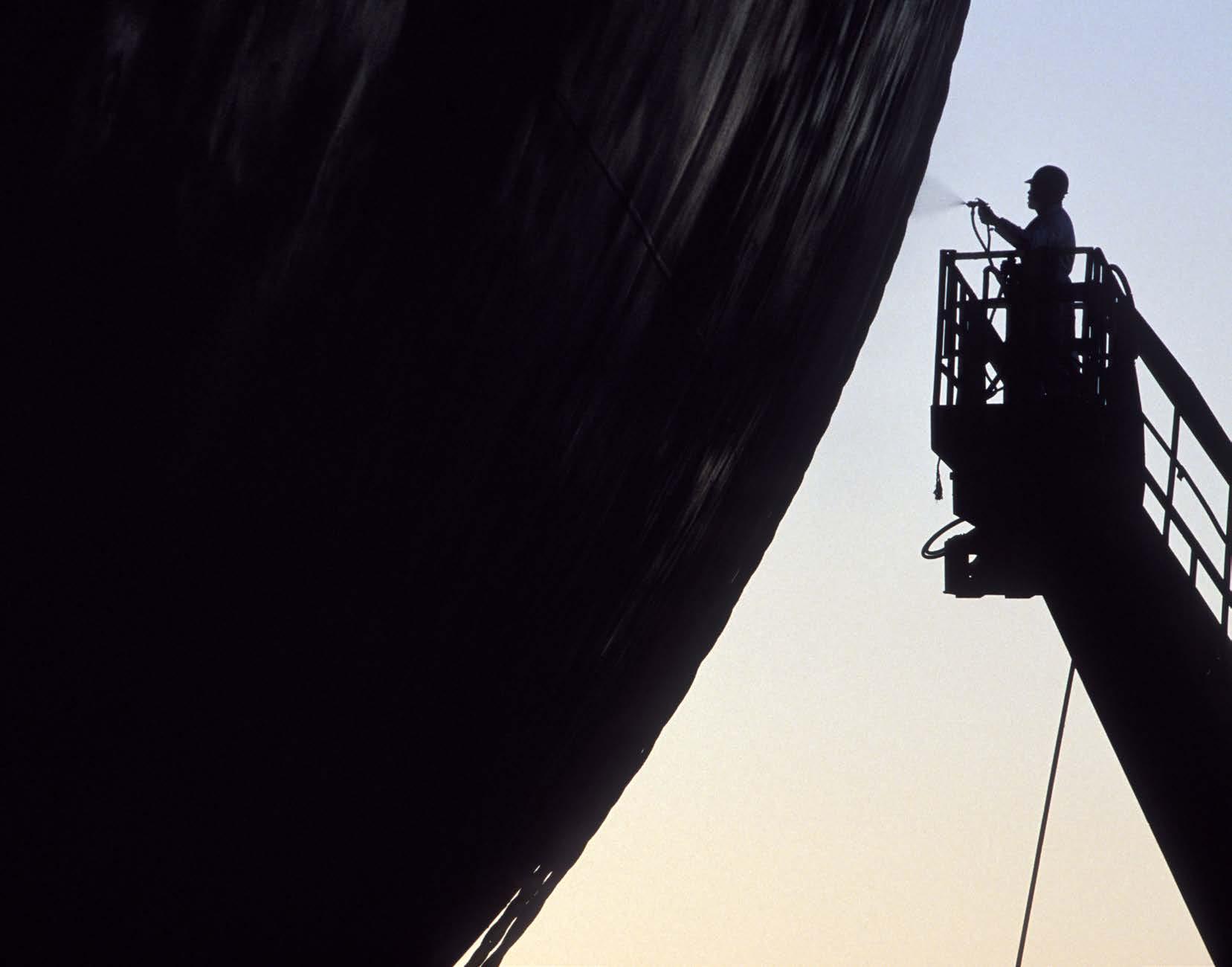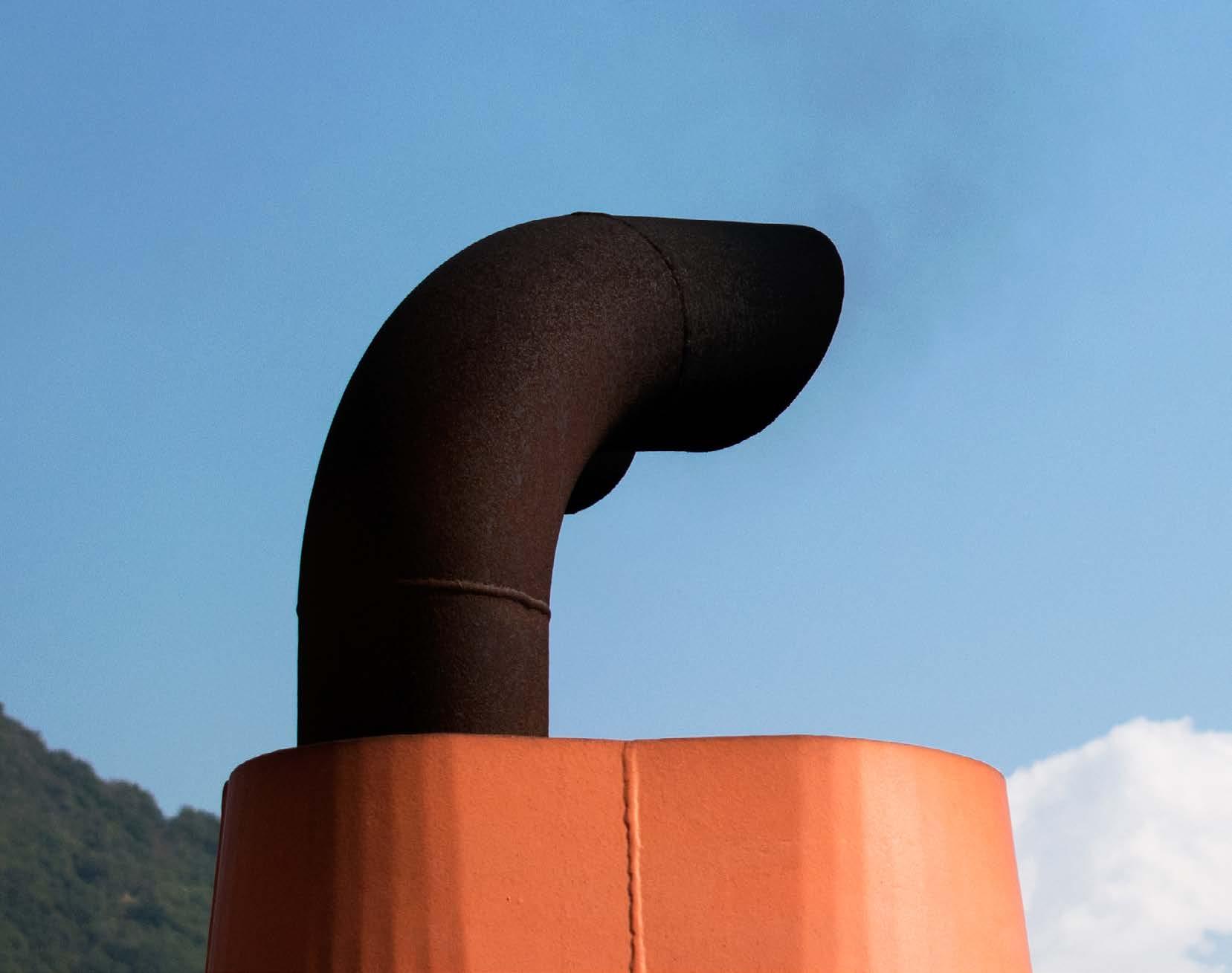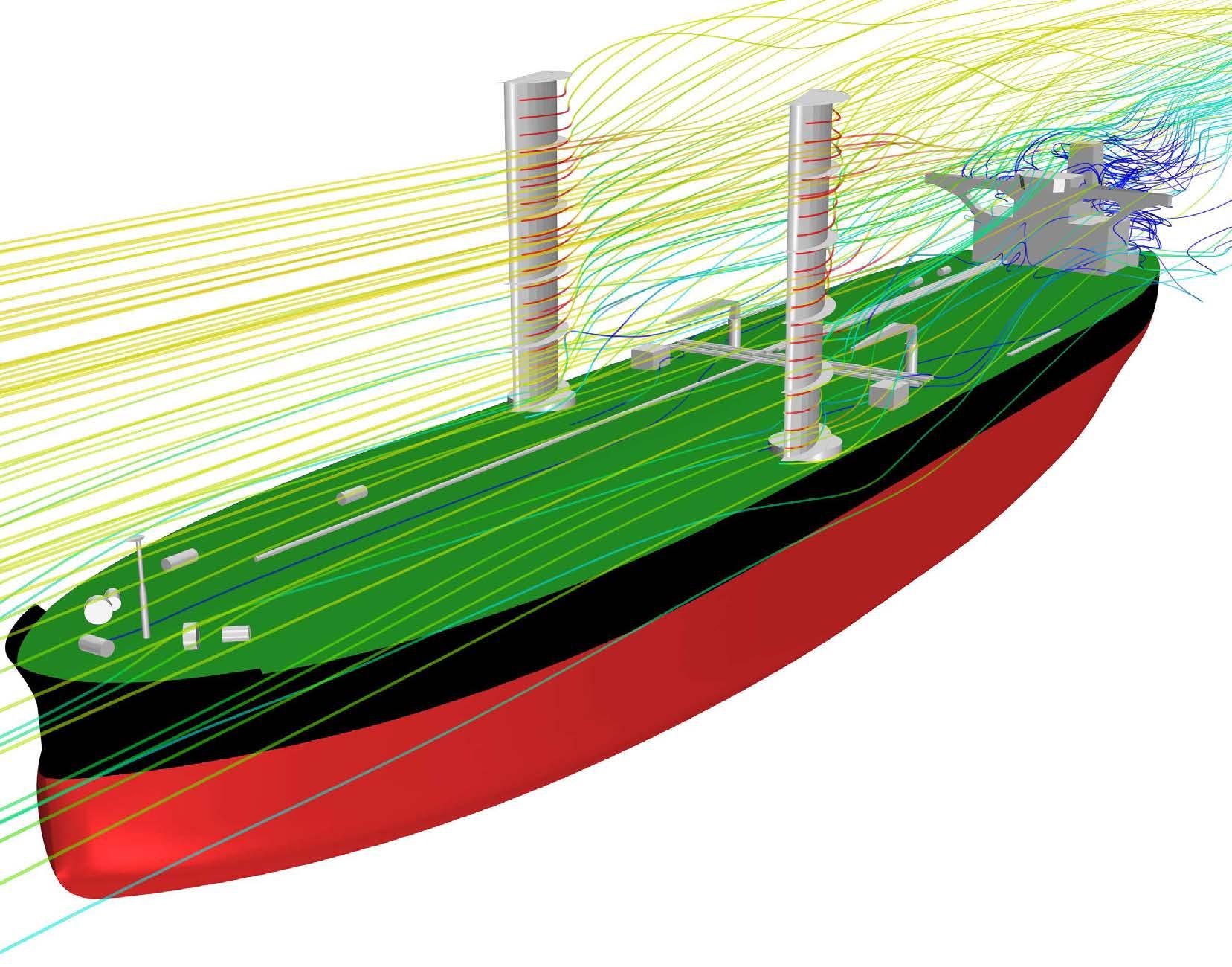
26 minute read
BALLAST WATER
from CSI Spring 2021
by Maritime-AMC
Shipowners need to be aware of the rules and regulations surrounding ballast water management systems, in what could prove to be a defining year for the industry, as leading BWMS players reveal
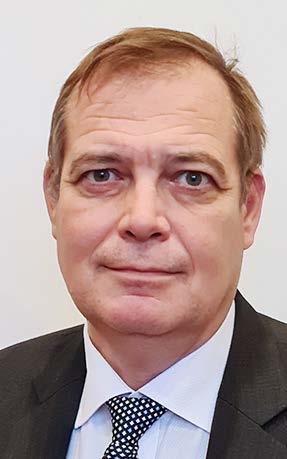
ACT NOW
OR FACE THE CONSEQUENCES
Clean Shipping International talked to several leading ballast water management system (BWMS) players to hear their views on testing, the G8 rules and the forthcoming International Maritime Organization (IMO) meetings later this year, which are due to address issues surrounding the use of BWMS.
Opening the debate, Simon Hodgkinson, global head of loss prevention at West P&I, said that global ballast water regulations have created an inherently complex environment for shipowners, especially those operating across two different regulatory frameworks.
Both IMO and US Coast Guard (USCG) rules set strict standards for the treatment of ballast water, which means that a ballast water management system must be working as intended. For some shipowners, this is proving to be a complex task.
For example, many shipowners that Hodgkinson has spoken with – quite reasonably – assume that keeping logbooks, following paper-based rules and installing a certified BWMS on their vessel is enough to comply with the regulations. Unfortunately, this is not always the case.
Since BWMS became mandatory there have been repeated concerns from regulators, as well as some owners, that BWMS have been installed incorrectly. Errors during the installation process, or during the manufacture of a system, could cause a system to fail to treat water properly.
It is common practice for shipowners to limit their risk contractually through indicative commissioning testing. However, recent research by certification company SGS showed that the majority of failures were due to the largest microbes, which are not currently measured by most indicative tests.
These risks were reduced under the IMO regulations at November’s Marine Environment Protection Committee (MEPC 75) meeting. New commissioning testing standards were set, which required that a BWMS is tested before delivery for every regulated organism type, including the
largest. However, these new standards will only enter into force in October, 2021. Shipowners planning newbuilds or retrofits before this date should ensure that they have taken these risks into account when talking to suppliers, he warned.
BWMS FAILURE
There are a lot of reasons why a BWMS might fail. In most cases, a crew will be able to readily identify that there is an issue before a discharge.
If a BWMS fails while at sea, the crew must communicate the issue with the destination port prior to arrival. The ship may then conduct a water exchange offshore, or, if facilities exist, arrange to discharge the ballast water to an onshore facility.
Should a failure happen in port, there are fewer options open. Depending on where the ballast is situated, it may not be possible to load or unload cargo until specialist engineers have fixed the system, Hodgkinson said.
There is also the risk of an undetected failure, due to issues with filters or turbidity causing faults that could only be detected through lab quality testing. Indeed, a shipowner could have done everything by the book yet face fines and delays upon compliance testing.
PAPERWORK ISSUES
Despite the mechanical risks created by ballast water regulations, the majority of non-compliance issues so far have stemmed from paperwork issues. Lapses in paperwork currently account for most of these cases, where a vessel has been granted an exemption that has then been allowed to lapse. These are often caused by vessels travelling between IMO and USCG jurisdictions and neglecting to renew the required exemptions.
Certificates, logbooks, exemptions, and the ballast water plan must all be up to date – and specific to the vessel in question. The crew must also be aware of the contents of the Ballast Water Plan and able to answer questions about it. This can be a mystifying process for shipowners.
In some cases, however, a claim might stem from a faulty BWMS. If untreated ballast water was accidentally discharged, or if a BWMS had an undetected fault that was discovered only through compliance action, it would be treated as a pollution incident. In most cases this will be covered by P&I cover.
However, a vessel that arrives at port with a broken BWMS and discharges untreated ballast water, where there has been no attempt to remedy the situation, will not be covered.
It is thus critical that shipowners work with ballast water suppliers and their P&I Club to ensure that they are following best practice at all times. From the commissioning of systems to operation, a shipowner must ensure that their systems are working as designed and their paperwork is up to date, he concluded.
STABILITY NEEDED
Looking into her crystal ball, Michelle Guy, Wärtsilä BWMS team sales manager, said that as shipowners, managers and operators need to be compliant with both international and localised rules, a period of regulatory stability is required for vessels to settle into their new operations.
Constant uncertainty with changing standards, compliance testing and so on makes a hard operational and economical decision even harder. She explained that the IMO’s SubCommittee on Pollution Prevention and Response (PPR8) meeting, scheduled for 22-26- March this year, will look at a proposed protocol for the verification of BW compliance monitoring devices.
There is a joint submission from Canada, Denmark and Germany, as members of the International Council for the Exploration of the Sea (ICES) (PPR8/11), plus and independent comment on PPR8/11 from France.
As for MEPC 76 (10-17 June), no BWMS documents have been submitted as yet, as submissions for this meeting are due by 10 March, 2021.
Guy said she was encouraged to see the finalised adoption concerning BWMS commissioning testing at last year’s MEPC 75 and the confirmation that the amendments will come into force 1 June 2022.
The finalisation of BWM.2/Circ.70Rev.1 and its associated document, BWM.2/Circ.42/Rev.2, provided the industry with the vital instructions needed for implementation.
Further, BWM.2/Circ.42/Rev.2 showed significant progress, compared to the previous version in respect of its general approach for indicative and detailed analysis.
To ensure confidence in this emerging requirement, Guy said that she hoped the IMO will continue to build upon this document during MEPC 76 and MEPC 77 when it comes to a level of confidence, which today is largely still “to be determined” or to be internationally standardised.
With this clarity, a unified way of working can be implemented by Flag Administrations, Recognised Organisations and testing suppliers to bring piece of mind to shipowners and BWMS suppliers alike, she concluded.
TEST PROTOCOLS
Alfa Laval explained that when the work with the new revised IMO test regime G8 was initiated back 2014, the aim was mainly to make the testing protocol: » More robust and maker independent » Bring transparency of test results and system design limitations » Last, but not least, harmonise the requirements and make sure a consistent review was conduct with all member states.
In practice, the USCG requirements had already set the technical bar for making the testing more robust and independent, but what has been of great value for vessel owners was the transparency of the system’s design limitations.
Today, it is clearly stated on the certificates what associated limitations the systems have in terms of salinity, temperature, hold-times and UV-transparency. After a review, it can clearly be concluded that some systems are less suitable for global trades.
One example given was that more than half of the UV systems can’t treat water below a UV Transmittance (UVT) of 60% without limitations – 60% of all UV and electrical conductivity (EC) systems have some in-tank ballast water hold-time limitation.
Of the EC systems, many have limitations in temperature or salinity, and without, for instance, power plugs that consume a lot of energy or supply of salt they will not be operable in many waters, Alfa Laval explained.
It is important for vessel owners to assess their fleet requirements, so they don’t find out after an installation that the system is inoperable. Vessel owners should simulate their trades to give a compliance navigator. Then they can assess beforehand if the system design limitations will match the water conditions for the vessels’ trading pattern.
Turning to the US Environmental Protection Agency (EPA), Alfa Laval said that the main purpose of its Vessel Incidental Discharge Act (VIDA) act was to implement a national standard in order to have vessels comply with various standards, as they pass state borders while sailing on the US waterways.
The act also states that the new standard must be as stringent as the Vessel General Permit (VGP) 2013. One very important new step in VIDA is the acceptance of type approval protocols that render organisms non-viable. This finally put the US authority’s definition of live/dead versus the IMO’s nonviable discussion to an end.
Once testing policies are released, this will enable UV systems to be operated in one mode in US waters as in the rest of the world. Since UV systems generally have no temperature or salinity limitations, this new policy will enable the acceptance of usage of the system also in low UVT (turbid) waters this is of great benefit for UV technology, the company said.
As for the forthcoming IMO meetings, Alfa Laval explained that PPR 8 will be digitally held in March, 2021. The aquatic species (ballast
water) will be tackled in a working group that also will manage topics related to anti fouling systems. A topic on the ballast water agenda is to finalise the protocol for the verification of ballast water monitoring devices.
For MEPC 76 and MEPC 77, it is expected that the regulatory activity will be low, but activity will increase once the building phase is seen to start to come to an end (MEPC 79).
At that time, it is expected that states and organisations will share their experience and the convention will eventually be amended to fix any common problems that were identified, the company concluded.
G8 GUIDELINES
Debra DiCianna, senior compliance manager, Choice Ballast Solutions explained the role of G8.
She said that the Guidelines for BWMS approval (G8) were established to support the Ballast Water Management Convention (BWMC) for the BWMS type approval.
The initial Guidelines G8 (Resolution MEPC.125(53)) were revised in a series of amended resolutions (MEPC.174(58), MEPC.279(70)) to improve type approval testing. In 2018, MEPC adopted the Code for Approval of Ballast Water Management systems (BWMS Code) through Resolution MEPC.300(720).
The BWMC was then amended to include the BWMS Code. There are many technical differences between the G8 and BWMS Code, which would be too lengthy to explain in this feature.
The Guidelines G8 were only recommended procedures for a type approval. The BWMS Code includes requirements for BWMS type approval and certification to ensure all BWMS testing undergoes the same, more rigorous testing.
Talking of the new testing regime, she said that its value has yet to be proven. From Choice Ballast Solution’s experience, most BWMS installation issues could be resolved through more thorough surveys by class societies and/or flag administrations, which is required for a BWMS operation – not additional testing.
Commissioning testing to receive a International BWM Certificate (IBWMC) makes a BWMS installation and commissioning more complicated and creates many logistical problems. If the BWMS installation is undertaken in a shipyard and the IBWMC needs to be issued at that time, commissioning testing may be difficult to complete, due to the water quality in the yard and ability to get testing support. In addition, the cost of commissioning testing can be significant.
Currently, she said that Choice is supporting its customers that want a test to ensure their BWMS is operating
as promised from the manufacturer’s purchase agreement. This type of testing usually occurs during the first year of operation.
Turning to the US Environmental Protection Agency (EPA) proposed Vessel Incidental Discharge Performance standards, DiCianna explained that these did not require an assessment of new environmental impacts on ballast water discharges.
The EPA proposed new type approval testing for low salinity ballast water, which would be a new challenge for BWMS suppliers.
One of the keys to compliance is simple regulations. The differences in type approval certificates (that is, USCG versus BWMS Code) are already complicated and confusing. Adding another different point could further confuse the ship’s crew and complicate the ship’s compliance.
Choice Ballast Solutions offers support for BWMS compliance – from scanning, surveys, integrated engineering designs, installation to post installation compliance.
The company has expanded its support to include many environmental areas, such as EPA Vessel General Permit, the upcoming Vessel Incidental Discharges regulations, biofouling and various MARPOL issues.
As for the forthcoming IMO meetings, she said that the main focus of PPR8 in March is biofouling, MARPOL Annex IV, the IBC Code and black carbon.
Choice’s main attention will be directed at the review of the 2011 Biofouling Guidelines to ensure any changes are in line with the company’s experience.
As it will be a virtual meeting, it will be difficult to address any topics that require extensive discussion at MEPC 76. She said she hoped that MEPC 77 will allow the full discussion of topics that need to be considered, such as an amendment to the BWMC to permit ballast water exchange (BWE) as a contingency measure if a system is not operable.
The BWMC is worded such that BWE is no longer an option after a ship’s compliance date for Regulation D-2, she explained. MORE ROBUST
Expanding on G8, Ecochlor CEO Steve Candito claimed that the BWMS Code type approval is more robust than earlier versions of G8 and is closer to the BWMS standards regulated by the USCG. Furthermore, the BWMS Code contains requirements for type approval versus G8 guidelines that were open to interpretation.

Ecochlor CEO Steve Candito
As of 28 October, 2020, it became a requirement for shipowners to install a system that has BWMS Code type approval in order to be compliant with the IMO BWMC. This requirement will negatively impact any vessel with trade routes outside the US that selected a BWMS without this approval.
In addition, the BWMS Code type approval process has a number of changes that are different from the G8 approval and these restrictions are now noted directly on the certificate. Requirements that vessel owners should keep a particular eye on are: » System operating parameters » System design limitations (SDL) » Bypass requirement records » General monitoring notations. Analysing each of the above factors more closely starting with system operating parameters in relation to water quality, it typically focuses on the salinity and temperature of the water.
Prior to the BWMS Code, manufacturers could test their BWMS in only two different salinities, but received an approval for all three water types – fresh, salt and brackish water. However, under the new requirements, manufacturers must test in all three salinities to receive approval.
A BWMS that has not been tested in all salinities will have limitations, included within the BWMS Code Type Approval Certificate.
The second change focuses on SDLs and, again, the certificate must identify each relevant operational parameter together with the validated low and/or high parameter values.
The system’s design capacity is obviously a critical parameter since it must match the vessel’s ballast flow rate. For example, the Ecochlor system is approved for 50-16,200m3 per hour, which is the highest approved flow rate in the industry.
This flow rate capacity must be noted on the type approval certificate and the vessel may not exceed the flow rate listed on the certificate.
The third factor in the BWMS Code is related to bypass requirements that requires manufacturers to have “…bypasses or overrides to protect the safety of the ship and personnel…” that are connected to the vessel’s ballast system.
These bypass systems must activate an alarm and be recorded by the BWMS’ control and monitoring equipment. The crew is required to record this information within the ballast water record book every time the system is bypassed or an alarm activates.
Finally, with regard to general monitoring, the system must monitor, record and store sufficient data on the various operating parameters to verify correct operation for at least two years. Alerts must automatically occur when the system is shut down or when an operational parameter exceeds the approved parameter.
As for the testing regime, Candito explained that a BWMS efficacy test at commissioning is a small but important step within the scope of a BWMS installation. It is critical to provide clear and concise evidence that the BWMS has been properly installed and is operating correctly so that it can meet
the compliance requirements at any port worldwide.
This testing process during commissioning is not dissimilar to the on-board testing that all BWMS have undertaken during their IMO/USCG certification processes. The owner must select an independent testing organisation to carry out the IMO BWMS commissioning test.
In most cases, according to the guidelines set in place by the flag administration, the manufacturer may be allowed to be present, but is not permitted to either operate the system or to assist the crew, as they are required to run the system from uptake to discharge.
TESTING ADVOCATE
Along with shipowners, Ecochlor has always been an advocate for testing after the installation. “The reason for our support is clear,” said Candito. “It is just as important to us, the manufacturer, as it is to an owner, to be confident that our system is working effectively prior to the ship leaving the shipyard.”
Expanding on the EPA proposal, Candito said that it contained a new set of regulations covering discharge of ballast water – among a list of 20 different types of discharge – under the new Vessel Incidental Discharge Act (VIDA).
The proposed standards are in the form of “numeric effluent limits and best management practices… that are at least as stringent as the 2013 Vessel General Permit (VGP), with limited exceptions”.
Under the current Proposed National Standards of Performance, a national standard will pre-empt state and local laws, making it less confusing for shipowners sailing to multiple ports in the US – although there are procedures in place for States, working through the EPA or the USCG, to seek different discharge requirements.
In addition, VIDA has extended its jurisdiction for regulating incidental discharges out from three to 12 nautical miles at sea.
One interesting change relevant to US flag coastwise crude oil tankers is that the exemption for BWMS is removed, thus they will now need to install a system to be compliant. While vessels operating exclusively on the Great Lakes will not be required to comply with the ballast water discharge standards, extra ballast water exchange requirements may apply to vessels operating in the Pacific region and those trading to and from the Great Lakes.
Candito said that a long-awaited question that remains unanswered concerns the quantification of “nonviable” organisms in ballast discharge. Under the proposed VIDA standards, the EPA has taken the position that until the USCG has identified testing protocols based on best available science available for enumerating non-viable organisms as there are for “dead” organisms, the current testing requirements will remain the same. Many UV BWMS manufacturers were expecting the USCG to follow the IMO standards on this issue.
The next step in this process occurs when the EPA releases the publication of the Final Vessel Incidental Discharge National Standards of Performance. From that date, the USCG has two years to publish its final regulations for implementation of the performance standards established by the EPA.
As for Ecochlor, the company had increased the number of chemical service resupply hubs and spare parts supply network and has further plans to develop more locations that align with the needs of the client-base.
The goal is to have these services located throughout the three main time zones – Asia, Europe and the US – and in multiple areas.
GREEN MARINE
Furthermore, Candito said that Ecochlor is continuing its ongoing plans for expansion and diversification through a “Green Marine” platform in collaboration with other maritime business providers that offer environmental products and services to the maritime industry.
Addressing future IMO meetings, Candito said that at MEPC 75, the committee adopted amendments to the BWMC in regard to commissioning testing along with a new 1 June, 2022 date for mandatory compliance.
The committee also approved “Revised Guidance for the commissioning testing of ballast water management system” (BWM.2/Circ.70/ Rev.1); and “Revised Guidance on ballast water sampling and analysis for trial use in accordance with the BWM Convention and Guidelines (G2)” (BWM.2/Circ.42/Rev.2).
At PPR8, one item on the agenda for discussion is the “Evaluation and harmonisation of rules and guidance on the discharge water from EGCS into the aquatic environment, including conditions and areas”.
The virtual meeting will also consider a draft protocol for verification of ballast water compliance monitoring devices (CMDs). If the sub-committee agrees to a final draft protocol, this would be presented for consideration/ possible approval at MEPC 76.
This topic is of interest as it could provide insight of how use of CMD’s may influence and be incorporated into compliance monitoring for ballast water regulations, Candito concluded.
STEP FORWARD
Dimitrios Tsoulos, De Nora’s regional sales manager EMEA, said that the amendments to the BWMS Code introduced at MEPC 75 last year were a real step forward for shipowners.
After early reports of widespread operational issues in some systems, the authorities acted to update the standards that systems must meet to better reflect how they work operationally.
This very much chimes with De Nora’s philosophy, he claimed, saying; “We designed our BALPURE system to meet these goals from the start. The system’s original design and configuration has been rigorously and extensively tested throughout its development, and is still in use.”
Testing has been conducted around the world in a range of natural waters with varying ecosystems and salinities in accordance with strict quality standards and the efficacy of the system is in line with the IMO BWMS Code and USCG regulations, he added.
“At the same time, it is not a panacea; there is ample scope for operational issue with many BWMS on the market right now.
“Shipowners and suppliers must work together closely to ensure that the compliance challenge is met consistently in operation. This level of collaboration must include supporting with an installation, but it must extend into the operational phase,” he said.
ONETANK SUPPORT
Kevin Reynolds oneTank Managing Director said that he and his team supports the IMO’s efforts, through MEPC and PPR committees, to clarify guidance and increase confidence in the effectiveness of BWTS technologies.
The implementation of the BWMS Code, also called Revised G8 last October, was a good example. This revision built on over a decade of experience to provide clarity to the testing process and added some important checks, such as regrowth.
“This is positive as it provided increased clarity to ballast water treatment makers on testing requirements and increased confidence to vessel owners in that the equipment that they are selecting has met a standardised and rigorous testing process,” he said.
“We note that these efforts take a great deal of input from many stakeholders. There are significant differences in technologies, water quality and vessel operating parameters that impact the use of these guidelines and protocols.
“We highlight here that the Ballast Equipment Manufacturers’ Association (BEMA) is an important and coordinated voice in supporting the ongoing successful implementation of the Ballast Convention,” he concluded.
KEY ELEMENTS
Filters are obviously a key element of any BWTS. There are two key considerations BWTS manufacturers should be aware of when selecting a filter, Mark Riggio, Filtersafe’s head of marine explained.
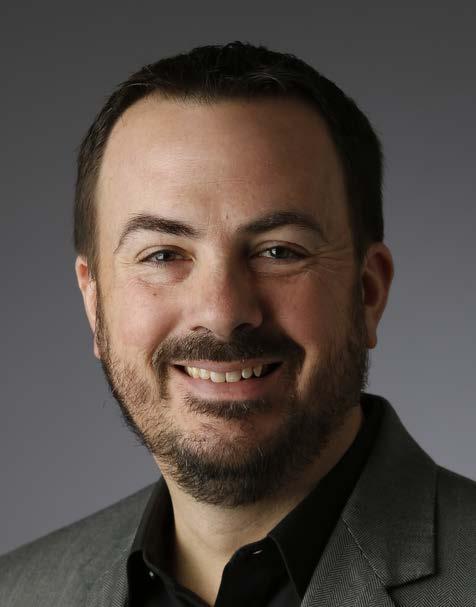
Filtersafe head of marine Mark Riggio
First, the most important foundation for an efficient BWTS is the filter’s ability to remove large organisms. This reduces stress on the treatment aspect of both chlorine and UV systems, reducing power and chemical usage.
Second, manufacturers should consider the filter’s operational performance in heavy sediment loads. It is imperative that the filter does not clog, as this would limit or even prohibit water flow through the BTWS, ultimately impacting the overall effectiveness of the entire system – and leaving manufacturers open to criticism from shipowners and operators.
The new requirements for commissioning testing, rather than G8 testing, are really bringing filters to the fore, he said.
This process is a critical test of filter performance, with less robust models unable to perform adequately in the challenging conditions at or near shipyards where water quality is poor, and the [water] depth is shallow.
Poorly performing filters can return an “unsatisfactory” test, which must be repeated at a later date, triggering additional expense and inconvenience.
As a result, shipowners and endusers increasingly understand that to avoid problems with their BWTS they must select a system that comes with a strong and robust filter, Riggio stressed.
The current virtual IMO meeting format adds a challenging new dynamic to current MEPC meetings; in particular, placing additional time constraints on delegates.
This means many pressing agenda items are competing for the committee’s attention and Filtersafe expects that items related to greenhouse gases, pollution and sewage treatment will be given priority over ballast water.
There are several ballast-related issues, including the experiencebuilding phase, that still need to be addressed.
Riggio said that he expected to see the industry starting to look closely at replacement components and undertaking further work to look at the modification of type approvals as equipment continues to improve.
“This is critical for filter manufacturers including Filtersafe, as it opens up the opportunity for us to introduce product improvements based on our experience, such as new cleaning mechanisms and improved filter meshes,“ he said.
A new USCG policy letter (CG-OES Policy Letter 03-20) supports more defined testing regimes for product improvements, streamlining approval processes and enabling BWTS to evolve. This evolution can be realised
faster if the IMO steps in and follows the USCG’s lead, he stressed.
As for the life of a filter, Riggio explained that it is designed for the life of the vessel, therefore has a roughly 20-year life span.
However, Filtersafe recommends the mesh screens are inspected every five years during routine BWTS inspections to ensure they are still operating effectively.
As the mesh filter screens are typically 20 or 40 microns in opening, they cannot be easily reverified visually and instead require special tools for detailed inspection.
He revealed that Filtersafe is currently developing its own tool to simply and rapidly verify mesh integrity. This aims not only to increase the lifespan of screens, but also to give owners confidence that the filter is still operating effectively.
Filter service packages are typically included in the overall BWTS service plan, with inspections completed by BWTS manufacturers every five years at the same time as disinfection equipment.
He added that the company has a highly collaborative relationship with BWTS manufacturers.
“It’s absolutely essential for us to ensure that manufacturers are provided with a filter that supports the overall performance of the BWTS, ensuring it meets shipowner and end user expectations,” he said.
“When a problem is reported to us, we aim to react quickly, even supplying free filter screens outside of the warranty period if the product doesn’t meet our expectations. We’re also actively investigating installations where problems have not been seen.
“We’re making a huge effort to reach out to BWTS manufacturers, asking them to open their filters and assess their performance. If a filter has performed particularly well, we want to extract lessons learned and share them with others to increase standards across the industry.
“This outreach programme is only set to grow once the covid-19 pandemic subsides and international travel mobility starts to improve,” he concluded. OPTIMARIN CERTIFICATED
Norwegian-based BWTS provider Optimarin, meanwhile, has received a revised IMO G8 certificate.
This ensures complete global compliance for a growing customer base, which includes the latest orders received from Arriva Shipping, for its fleet of drybulk vessels, and Østensjø Rederi, for four newbuilds currently under construction at Spain’s Gondan shipyard, the company said.
Optimarin’s revised G8 certificate followed a successful testing programme conducted at Norway’s NIVA facility, from September, 2019 to June, 2020, where 32 IMO and USCG tests were run in parallel using two filters – Filtrex and Boll & Kirch – simultaneously across three salinity conditions – fresh, brackish and marine water – with zero interruptions or mechanical issues recorded.
To gain a certificate, five tests are needed on the three salinities, which should take place consecutively on each. G8 testing can also be combined with a USCG type approval. A plan approval is required, Optimarin explained.

Optimarin CEO Leiv Kallestad
“Our simple, easy to install and environmentally friendly UV-based technology has a history of reliable operation, both at sea, with our customers, and in the most stringent testing environments,” said Optimarin CEO Leiv Kallestad. “Market leading compliance, reliability and performance have been central to building our reputation in the market, as it means more uptime for the shipowner. We’re pleased to move forwards with a certificate for a top-class system that ensures our customers can enjoy flexible, worldwide operations with complete peace of mind.”
“Shipowners and operators looking to select systems need to ensure that technology is future proof in terms of regulations,” Kallestad warned. “Suppliers, like Optimarin, that can offer full USCG and revised G8 certification, alongside a long history of operational success, will provide that reassurance.
“It’s important to identify suppliers that actually have the approvals in place now, rather than promising they will get it, to make sure installations and operations proceed with the minimal of disruption… or disappointment. In other words, choose a partner you know you can trust,” he added.
Optimarin’s technical sales manager Jurrien Baretta, speaking at a seminar, explained that, as the type approval is linked to all of the equipment’s components as tested – the company is not allowed to remove or replace anything without losing the type approval – this new testing sequence was a good opportunity to carry out some improvements to the original design.
The original protocol still gave some room for interpretation, which was further detailed in the revised G8/IMO code, as DNV GL’s Martin Olofsson explained.
Under the IMO D-2 rules, all new vessels built on or after 8th September 2017 must be in compliance with BWMC, while existing ships must comply at their first IOPP renewal survey after 8 September, 2019. All vessels must be in compliance by 8 September, 2024.
Olofsson explained that the USCG was the driving force in the type approval process. Today, some 37 different BWTS have gained USCG Type Approval with another five under test, according to the USCG. He agreed that installations would probably peak in the summer of 2022 with maybe up to 10,000 vessels involved, which will cause problems in the shipyards’ scheduling.


